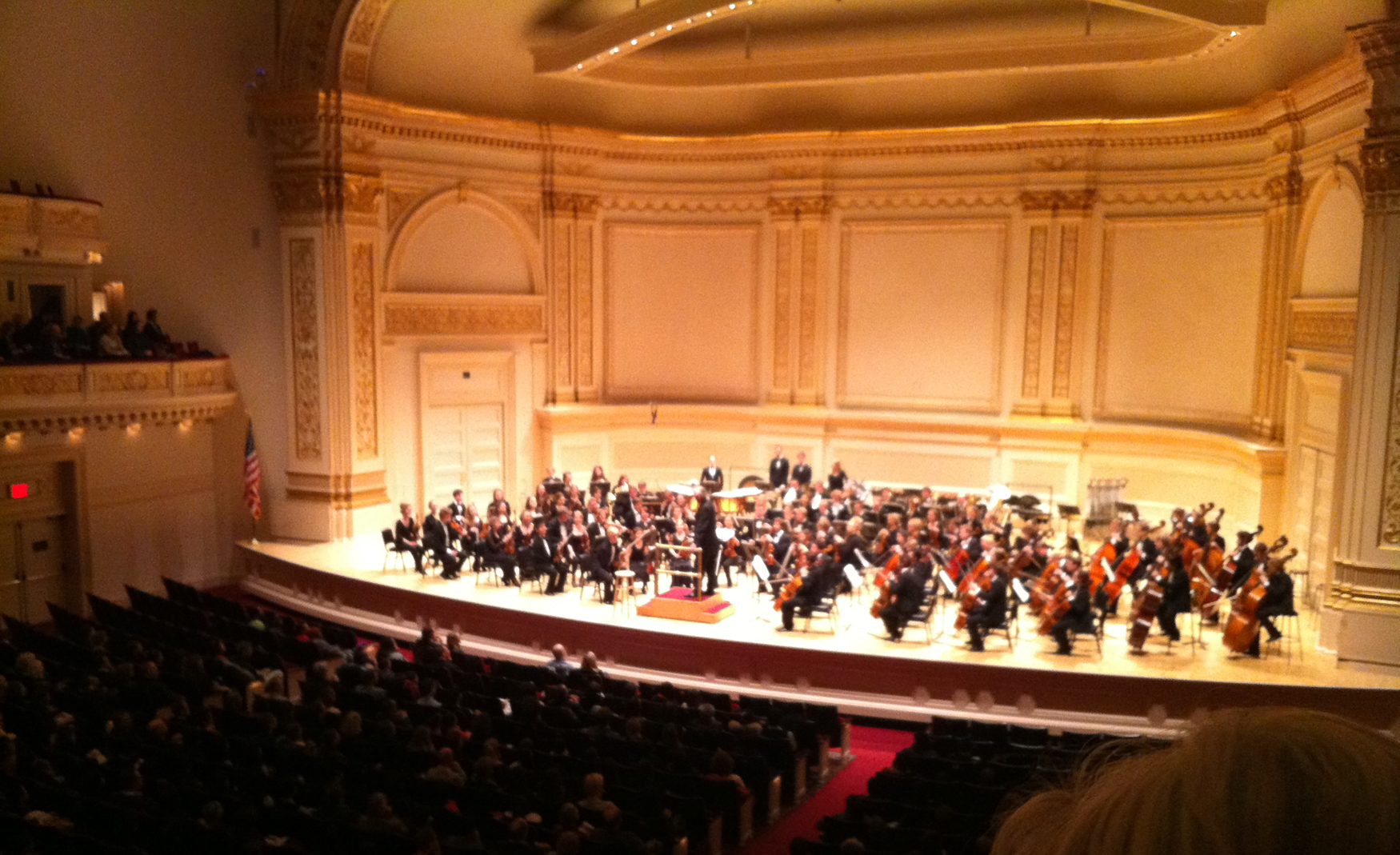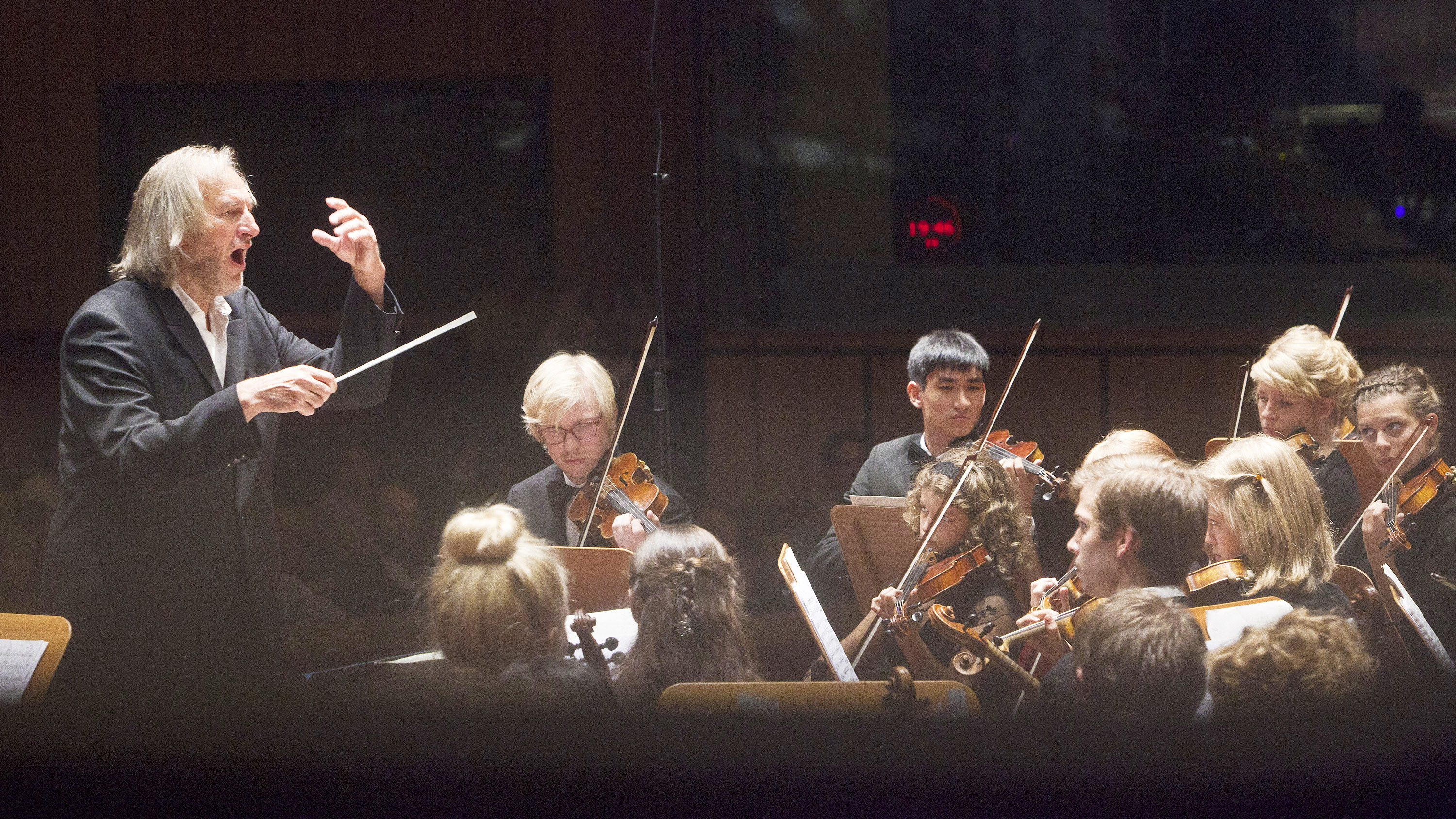Unabashed young Swedish talent
A review of the Swedish National Youth Orchestra's recent performances in the U.S..
-

-
-
Unabashed young Swedish talent on show in America
In just two years, the Swedish National Youth Orchestra, under the direction of Estonian-born Maestro Tõnu Kaljuste, has successfully harmonized raw artistic talent with disciplined musical performance. The brainchild of violinist, pedagogue and impressaria, Nina Baladina, the Youth Orchestra recently played a series of concerts at some of the United States’ most celebrated music venues, including Chicago Symphony Hall and New York’s Carnegie Hall. Baladina is also responsible for the founding of the orchestra’s feeder-school: the Junior Academy (Lilla Akademien) in Stockholm, where aspiring young musicians from across the country come to integrate general academic studies with rigorous specialized music programs that include individual instrumental lessons as well as a tailored curriculum of music theory, analysis and composition. -

-
-
I was fortunate enough to catch Sweden’s first Youth Orchestra on their inaugural performance in Chicago at Symphony Hall, where a crowd of Swedes, students and music enthusiasts were at once captivated by the Swedish Festival Music of August Söderman—a rarely heard composer outside the Nordic region. With colorful strokes and detailed harmonies, the noble melodies welcomed the audience as though to invite to dance. I even observed a once-sceptical looking younger audience member wince as she tried to contain herself from joining in as she sat in her seat.
Joyous fan-fares gave way to the complex and at times dark ritualistic echos of Arvo Pärt, whose regal bells drew me back to Jarl Kulle’s recitals of Tennyson’s “Ring Klocka, Ring.” Then, joined by Johan Bridger (marimba) and Hugo Ticciati (violin), the orchestra next performed Tobias Broström’s "Samsara" or “continuous flow.” As the name might suggest, the piece was an imaginative and exciting embrace of the cyclical aspects of Indian classical music. The crowd watched in bewilderment and awe as wild hair flung violently from both the conductor and musicians who performed the work in the presence of the composer himself.
The short intermission was followed by an intense and rewarding hour-long symphony by Sergei Rachmaninoff. True to the Russian symphonic tradition of Tchaikovsky, Borodin and Balkirev, the work ultimately deviated from convention by a recognizably personal and dramatic journey from disquieting doubt and despair to triumphant, individual assertion in four contrasting movements. -

-
I found myself pleasantly humbled by the sensational performance of these impressive musicians, some as young as 15. “I’m from a working-class background but I play because I love music,” says Antonio, a principal violinist I met, whose 23rd birthday was that evening.
It was then that I realized just how special this symphony really was. Accordingly, Her Majesty Queen Silvia has tacitly lent her support to the organization and the Junior Academy, of which she is a patron. Funded by a slew of prominent private donors, it is encouraging to see such drive in the hearts and minds of talented Swedish youth to not just perform, but to compete, interact and excel on a global stage. I am glad we as a society are finally scrapping Jantelagen (law of being average) and continue to embrace the right to be talented and achieve excellence. I look forward to following in the success of these young musicians and those who they will undoubtedly inspire to similarly pursue dreams in Sweden and abroad. -
-
